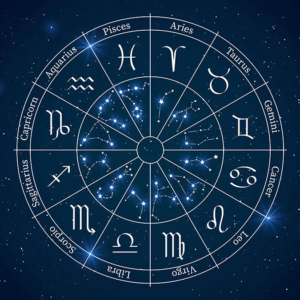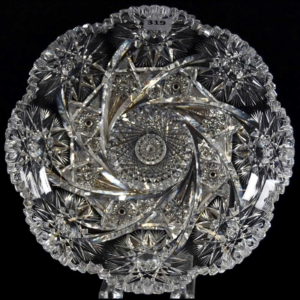Diorite Stone – Properties, Virtues & Benefits
In our guide to diorite stone, we present the properties, uses and benefits of this igneous rock, renowned for its hardness and density. Diorite is distinguished by its dark gray-green hue, as well as by the presence of white and black crystals. It has been used for centuries in construction and sculpture, but is also highly appreciated for interior and exterior decoration projects, offering a modern and elegant appearance.
DIORITE CHARACTERISTICS
- Chakra: Root (1st chakra).
- Properties: Inner strength, emotional stability, mental clarity.
- Astrology: Saturn.
- Zodiac: Capricorn.
- Elements: Earth.
- Colors: Dark gray-green.
- Hardness: 6-7 on the Mohs scale.
- Chemical Formula: (Ca,Na)[Al,(Si,Al)2O8].
- Associated god: None.
DIORITE – ITS HISTORY
Engineer Jules Aguard (1916-2003) was responsible for the discovery of the stone known as “Diorite orbiculaire”. After bringing a specimen back to France from Morocco for study, it was found that Corsica had previously been home to several of these stones, but that the mines had been overexploited. Today, it’s rare to find this stone, and even if you do, it will probably be too heavy or too large to use. The orbs present in Orbicular Diorite, mainly composed of calcium feldspar, are responsible for its radiance and are one of its main characteristics. Impurities can also lodge inside and form circles in the stone.
DIORITE STONE – ITS ORIGIN AND COMPOSITION
Diorite is a magmatic rock composed of green amphibole, mica and plagioclase, which makes it unique from other rocks in its class. It is distinguished from its cousins by its lack of quartz, low silica content and absence of olivine. For it to form, the magma must be between basaltic and granitic, and move through subduction or rifting zones. Plutonic melting gives rise to Diorite, as opposed to volcanic melting, which forms andesite. Diorite stone has a grainy texture and a rather light hue, with green amphibole and white feldspar crystals inside. It is the result of magma cooling in an area suitable for granite formation, which explains its appearance. Unlike andesite, diorite is an intrusive rock. It was named by mineralogist Alexandre Brongniart after the ancient Greek verb “to distinguish”. This rock can be found in granitic mountain ranges such as the central Alps, Vosges and Austria. It is often confused with Granodiorite and Gabbro.

DIORITE STONE – VERTIES AND PROPERTIES
Lithotherapy enthusiasts are particularly drawn to Diorite because it’s easy to live with and adapts easily to its wearer, as well as being highly effective at balancing the chakras. However, it should be noted that this stone seems to have a slight preference for people born under an earth sign.
PSYCHOLOGICAL DIORITY
If you’re looking to get rid of the bad energies around you, the orbicular stone can be an excellent choice. Sometimes these bad energies can be responsible for your malaise, making you feel sad, discouraged or depressed. This stone can help you eliminate them and regain a sense of well-being, also ordering your thoughts and eliminating dark thoughts. However, it’s important to clean and purify your stone regularly, as it can absorb negative energies for you, but risks releasing them if not properly cared for. To purify it, we recommend running it under running water. To activate your chakras, place your stone on areas of conflict, such as your forehead or midriff. The rock has its own keywords, which are strength, harmony, impartiality, peace of mind and determination.
PHYSICAL DIORITY
The physical effects of the stone depend on where it is placed during meditation. If placed on your chest, it can improve your breathing capacity, while it relieves digestive disorders if placed on your belly. Placed on your throat, it can relieve sore throats, coughs and hoarseness. This stone can also help athletes improve their performance by regulating their breathing and encouraging them to push themselves to break new records. Because of its small size and light weight, it can be carried everywhere with you. It’s important to remember that consultation with a doctor is recommended and that the stones cannot replace medical treatment, but rather provide temporary relief and support.

DIORITE – CLEAN AND REFILL
To clean diorite, you can use warm soapy water and a soft brush to remove dirt and debris. Avoid using abrasive chemicals as they can damage the stone’s surface.
To recharge diorite, you can place it under direct sunlight for several hours or let it rest on a quartz or amethyst slab overnight. You can also purify it with sage or palo santo. Visualize positive energy flowing into the stone as you cleanse or recharge it.
WHERE DOES THE NAME DIORITE COME FROM?
The name “diorite” comes from the Greek “diorizein”, meaning “distinct”. The name was given to the stone by French geologist Déodat Gratet de Dolomieu in 1820 to describe its distinct texture from the more common rock called granite. Diorite is composed mainly of sodium feldspar, plagioclase and amphiboles, and is distinguished from granite by its darker color and coarser texture.
WHICH CHAKRA DOES DIORITE ACT ON?
Diorite is associated with the root chakra, which is located at the base of the sPine. The root chakra is associated with grounding, stability, security and inner strength. Diorite can help to balance and stimulate this chakra, which can help to reinforce a sense of security, emotional stability and connection to the earth. It can also help overcome fears and uncertainties, increase self-confidence and promote mental clarity.
WHICH ASTROLOGICAL SIGN IS ASSOCIATED WITH DIORITY?
Diorite is associated with the zodiac sign of Capricorn, which is usually represented by the mountain goat. Capricorns are known for their stability, determination, ambition and seriousness, and diorite can help reinforce these qualities by stimulating the root chakra, which is associated with this astrological sign. Diorite can also help increase patience, endurance and perseverance, which are traits common to Capricorns.
DIORITE STONE SUMMARY
Diorite is a plutonic igneous rock, which means it formed deep in the earth’s crust from the slow crystallization of magma. It is composed mainly of plagioclase feldspar and ferromagnesian minerals such as amphibole and biotite, with variable proportions of quartz. Diorite lies between granite and gabbro in the igneous rock classification diagram, according to silica content and mineral composition.
.
Characteristics of diorite:
- Color: Diorite generally has a dark color, ranging from gray to black, with shades of white or green.
- Texture: diorite has a phaneritic texture, with crystals of size visible to the naked eye, which are generally intermediate to coarse.
- Density: diorite has a relatively high density, generally between 2.8 and 3.0 g/cm³.
Diorite uses:
- Construction: diorite is sometimes used as a building material, particularly for foundations, walls and flooring, due to its resistance to erosion and durability.
- Art and sculpture: In the past, diorite has been used to create sculptures and objets d’art, such as the famous Code of Hammurabi statue, an important monument in Mesopotamian history.
- Aggregates: diorite can be used as an aggregate in the manufacture of concrete or asphalt, although it is not usually the first choice due to its dark color.
Diorite is found in various parts of the world, including North America, Europe and Asia. Diorite deposits can be exploited commercially or simply studied to better understand the geology and evolution of the earth’s crust.

